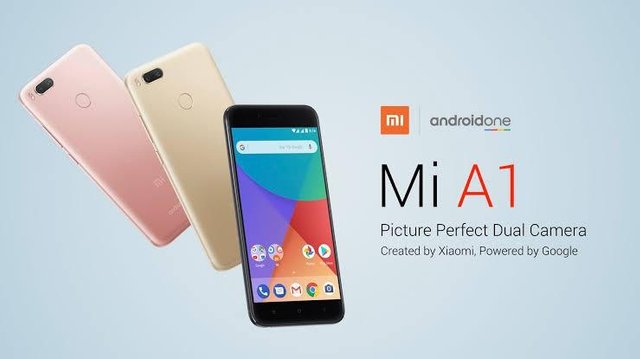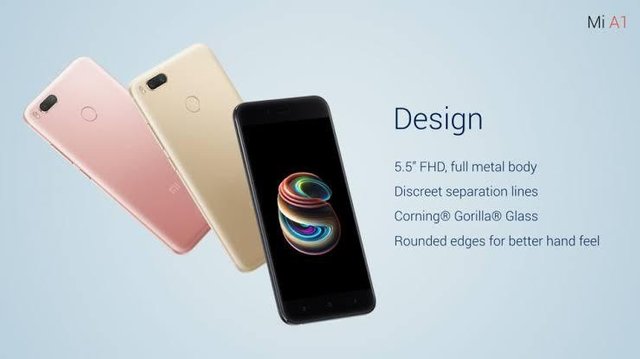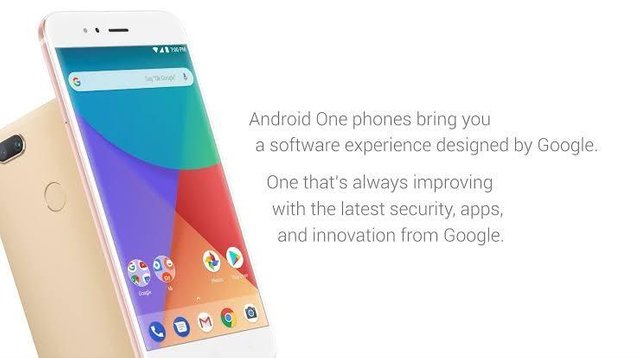
The Mi A1 is Xiaomi's best budget phone yet.
Of the hundreds of phones sold in the budget segment every year, a mere handful of devices stand out: the Moto G series, for instance, along with the likes of Xiaomi's Redmi Note phones, Lenovo's K series, and Honor's budget devices.
In 2017, that list is dominated by Xiaomi's phones. The Redmi Note 4 continues to be one of the best devices in the sub-₹15,000 segment seven months after its launch, and the Redmi 4 and Redmi 4A offer excellent bang for your buck in the sub-₹10,000 tier. Then there's the Mi Max 2, which for ₹16,999 offers a large 6.44-inch display backed by a gorgeous aluminum unibody design.
Xiaomi's aggressive positioning in the budget segment allowed the brand to catapult up the rankings, with the manufacturer now the second-largest phone vendor in India. The Redmi Note 4 and Redmi 4 are two of the best-selling phones in the country this year, and with its latest phone, Xiaomi is set to consolidate its position in this category.
The Mi A1 is a great phone in its own right, but Xiaomi's decision to partner with Google to deliver stock Android makes it a much more compelling option. A small but vocal minority of Xiaomi fans have been clamoring for a device with clean Android for some time now, and with the Mi A1, the brand has delivered just that.
Read on to find out why the Mi A1 is the best budget phone you can currently buy in India.
Xiaomi Mi A1 review
About this review
I (Harish Jonnalagadda) am writing this review after using the Mi A1 for two weeks in Hyderabad, India on Airtel's 4G network. The phone runs Android 7.1.2 Nougat out of the box along with the August 1, 2017 security patch. The unit was provided to Android Central for review by Xiaomi India.

XIAOMI MI A1 SPECES
Operating System Android 7.1.2 Nougat
Display 5.5-inch IPS LCD 1920 x 1080 (403ppi)
Gorilla Glass, 2.5D curved glass
Processer Qualcomm Snapdragon 625
2.0GHz octa-core Cortex A53
14nm FinFET
GPU Adreno 506
RAM 4GB
Storage 64GB
Expandable Yes, up to 128GB
Battery 3080mAh
Charging USB-C
Rear Camera 1 12MP wide-angle (OmniVision OV12A10) f/2.2, 1.25-micron pixels
Dual tone flash, PDAF
4K@30FPS
Rear Camera 2 12MP telephoto (OmniVision OV13880) f/2.6, 1.1-micron pixels
Front Camera 5MP
1080p video
Connectivity Wi-Fi 802.11 ac, Bluetooth 4.2
IR blaster, 3.5mm jack
GPS/AGPS, GLONASS, BeiDou
Audio 3.5mm headphone jack
Dedicated amplifier
Security One-touch fingerprint sensor at the back
SIM Dual SIM slot (hybrid slot)
Dimensions 155.4 x 75.8 x 7.3mm
165g
Colors Black, Gold, Rose Gold
Xiaomi Mi A1 review
Xiaomi Mi A1 Hardware
The Mi A1 is a rebranded variant of the Mi 5X, which sports an all-metal chassis with antenna lines at the top and bottom. There's a clear difference in the design language between the Redmi series and phones in the Mi lineup, with the latter featuring a more refined aesthetic. As a result, the Mi A1 makes recent devices like the Redmi Note 4 look outdated.
The clean lines combined with the aluminum chassis gives the Mi A1 a premium look, and the build quality is outstanding. The phone comes with a 3.5mm jack, and unlike the Redmi Note 4, there's a USB-C charging port at the bottom. The power and volume buttons at the back provide a decent amount of tactile feedback, and there's an IR blaster located up top.
The back of the device is where things get interesting, with the Mi A1 sporting a dual camera setup. The configuration is the same as that of the Mi 6 — a primary sensor augmented by a secondary telephoto lens — but Xiaomi is using different imaging sensors.
The positioning of the dual camera to the top left corner coupled with Xiaomi's decision to tuck the antenna bands at the top and bottom of the device means the Mi A1 has more than a passing resemblance to the OnePlus 5. There is a Mi logo and Android One signage at the bottom of the phone to inform the world that it isn't in fact a OnePlus 5, and the rear-mounted fingerprint sensor also makes that abundantly clear.
The Mi A1 is Xiaomi's best-looking phone in the budget segment thus far.
The fingerprint sensor is conveniently located such that your finger automatically rests on it, and it had no issues authenticating my fingerprints.
Switching over to the front, the first thing you notice is the bezels at the top and bottom, and if you're picking up the gold color option, you'll get a white front plate. The side bezels are narrow, which makes it easier to hold the phone, and the back button is in the wrong position for a phone running stock Android.
Xiaomi has a long history of offering decent LCD panels in its phones, and the situation is no different with the Mi A1. The 5.5-inch Full HD screen is one of the best in this segment, with excellent colors and viewing angles. The panel gets sufficiently bright that it isn't an issue to view the contents on the screen under harsh sunlight.
Coming over to the hardware side of things, the Snapdragon 625 paired with stock Android makes the Mi A1 absolutely fly. You're not going to notice any slowdowns or lags in everyday usage. It's astonishing just how fluid the phone is at day-to-day tasks, whether it's switching between apps, quickly launching the camera, or playing visually intensive games.
BATTERY LIFE
Battery life on the Mi A1 is excellent. I was initially worried that the 3080mAh battery wouldn't last a day, but I consistently got a day and a half's worth of usage out of the battery.
Even on days when I was on cellular data throughout, I managed to get up to four hours of screen-on-time and overall battery life exceeding 20 hours. To put that into context, that's nearly double what I averaged on the Pixel XL in similar conditions.
The one downside is the lack of a fast charging option. The Mi A1 tops out at 5V/2A, and it takes nearly two hours to fully charge the phone.
Xiaomi Mi A1 Nougat
Software
The software is what sets the Mi A1 apart from every other Xiaomi phone in the market today. The Chinese manufacturer teamed up with Google to offer the Mi A1 as a part of the Android One initiative, which means that for the first time, we're getting to see a Xiaomi phone with stock Android.
Google's first attempt with Android One failed miserably due to a combination of several factors. The phones were underwhelming and didn't stand out in the entry-level segment where they were positioned, and Google didn't do enough to advertize them to the masses. By partnering with Xiaomi, it is addressing those setbacks: the Mi A1 is one of the best-looking phones in the budget segment, and Xiaomi utterly dominates the mind share in markets like India, which ensures the phone gets plenty of visibility.
The software experience on the Mi A1 is on par with the Pixels and Nexus devices.
As for the software experience itself, it is in line with what you'd get on a Pixel or Nexus device. There's a swipe up gesture to access the app drawer, Google Now occupies the left-most pane, and all interface elements are unchanged from stock Android.
The phone runs Android 7.1.2 Nougat out of the box, and has the August 1, 2017 security patch. You get all the features built into Nougat, including split-screen multitasking, in-line notification replies, app shortcuts, granular controls for Do Not Disturb, and more. Then there's the ability to pull down the notification shade by swiping down on the fingerprint sensor, à la Pixel. There's also a gesture to quickly launch the camera by double pressing the power button.
Overall, it's a refreshing change to use a Xiaomi phone with stock Android. MIUI certainly has a lot to offer, but purists looking for an uncluttered experience finally have a device they can call their own.

Not indicating that the content you copy/paste is not your original work could be seen as plagiarism.
Some tips to share content and add value:
Repeated plagiarized posts are considered spam. Spam is discouraged by the community, and may result in action from the cheetah bot.
Creative Commons: If you are posting content under a Creative Commons license, please attribute and link according to the specific license. If you are posting content under CC0 or Public Domain please consider noting that at the end of your post.
If you are actually the original author, please do reply to let us know!
Thank You!
Downvoting a post can decrease pending rewards and make it less visible. Common reasons:
Submit
Hi! I am a robot. I just upvoted you! I found similar content that readers might be interested in:
http://androidhackers.com/xiaomi-mi-a1-review-best-of-both-worlds/
Downvoting a post can decrease pending rewards and make it less visible. Common reasons:
Submit
I have Done now your turn.
Downvoting a post can decrease pending rewards and make it less visible. Common reasons:
Submit
Hi friend upvote you
You also upvote comments on my posts
Downvoting a post can decrease pending rewards and make it less visible. Common reasons:
Submit
I upvote you........ pls upvote me
Downvoting a post can decrease pending rewards and make it less visible. Common reasons:
Submit